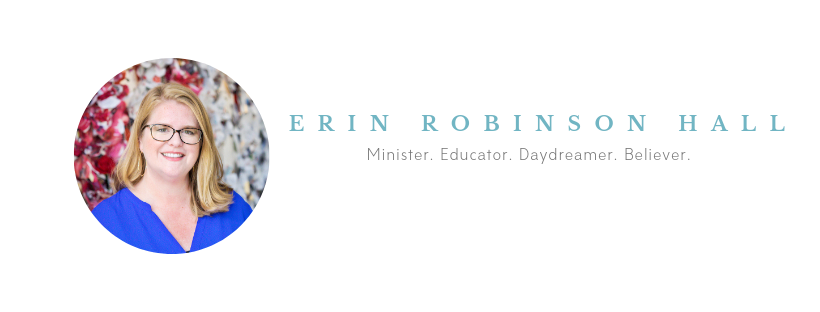The floor we walk on has carpet. Some tile and hardwood. It’s covered in dog hair and sprinkled with lego pieces.
My steps wear a path into the carpet upstairs, between the laundry room and kids’ bedrooms. I have learned which spots in the floor will creak and how to step gently like a ninja with no sound. These floors are sacred ground for us. Being mindful of our steps has been part of the healing work we have done for the past several years.
Sometimes, the ground we walk has crunching leaves It can feel cold beneath our bare feet, shoes intentionally left inside.
In our #traumainformedparenting journey, my husband and I learned early on that there is a magic of touching a different kind of ground with your bare toes. The sensory experience can pull someone away from where memories or triggers have taken them, and bring them back to the present moment.
We learned some practices for grounding that have saved us more than once.
As many of us know, the basic idea of grounding is to communicate with your body where you are truly located, instead of just listening to the alert signals your body might be sending that make you feel fearful, unsafe, and worried. Grounding can happen by connecting with things you can identify right in front of you. To get you in the present. To remind you, you are safe here. You can breathe, you can use your tools, you can be okay.
Grownups can do the 5, 4, 3, 2, 1 practice – five colors you can see, four things you can touch, three things you can smell, etc. Most often, our littlest ones need a snapshot story to get towards grounding. I find a color, a smell, and a touch. I tell a story about it. Little one is leaping like a frog and screaming? I know anxiety has kicked in and his trauma experiences tell him he is in danger. “Did I tell you about the bird I saw yesterday? He was purple! Purple like . . . let’s find purple.”
We search for the color. If I have anything with a pleasant smell nearby, we use that. Lotion in my purse, candy, even a hug and a silly prompt, “Does my hair smell like bubble gum or popcorn today? Come see!” These sensory moments take seconds but can snap us back to the present.
Then, and only then, can the parts of the brain that think and reason do the work of “making good choices.” Author Aundi Kolber describes a “tethering to love” in the work of grounding. “We feel pain, but are not swallowed by it. Love, hope, and safety allow us to leverage, risk, and face hard things from a place of resourcefulness that is unavailable to us in survival mode.”
Most often, we use the ground to ground us. Shoes slip off easily, even when it’s cold. We feel the texture of the concrete or the grass. The sensory reception on our heels prompts that peace like a reset button.
We sit on the ground, or the brick steps of a church, or the cold floor of a doctor’s office. Arms wrapped around, lowered on something firm and steady. I whisper a comfort or sing a song gently.
There we stay. Maybe that’s it. The ground can hold us. It doesn’t shift easily.
The meaning of sacred ground has changed for me.
Like the prayer I offered in this collection, I find holy moments on the floor. I can name that the ground becomes sacred in the places where I feel the most human.
Under the kitchen table, where crumbs and napkins fall? The communion of our family happened there.
Chalk drawings scribbled across a sidewalk? Little hands bearing witness to hope.
Scraps of paper left under the coloring table on a sanctuary floor? Evidence of holy welcome, where young listeners can wiggle and create from their little corner of the beloved community.
The ground has caught me and held steady. I am grateful for the ground.
+ + + + + + + + + + + + + + + + + + + + +
One spot of sacred ground I love is a yoga mat. What a gift to be able to move and stretch your body – YOUR very body – and give thanks for its journey. I am absolutely thrilled to share this new resource for anyone who enjoys yoga. Yoga Deck for all bodies. It is a gorgeous card deck with easy explanations on one side and fantastic photos to demonstrate on the other side. The models are people of MANY different sizes, ages, and abilities. Two of these models are my amazing daughter and my amazing husband! Find out more here.
#Yogaforallbodies #traumainformedcare #traumainformedpractices

